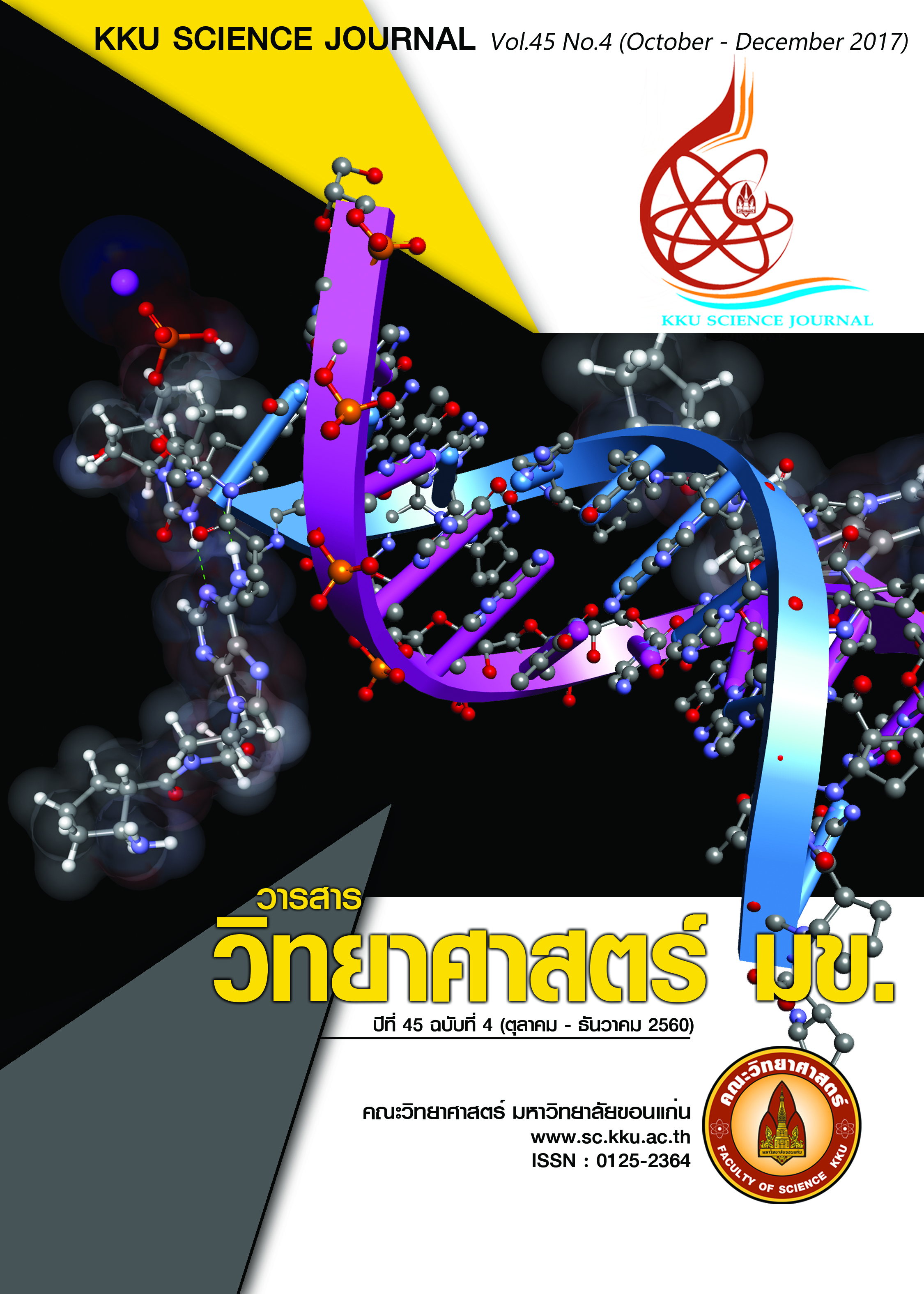CO2 emissions from biomass burning in the ChiangmaiLamphun Basin Area
Main Article Content
Abstract
The aim of this study was to quantify the amount of Carbon Dioxide (CO2) emissions from forest fires and biomass burning effects in several forms of land use. The study was conducted in 18 districts within the Chiang Mai-Lamphun Basin area in Northern Thailand. A randomised sampling were sampled in different land use areas of a 40 x 40 metres plot per area. The biomass fallen over grounds of various forest types and the agricultural biomass from farming activities were collected in three plots size 1 x 1 square metre in each area. Analysis of organic carbon was conducted in the laboratory, then was estimated to CO2 emissions by calculation. The results were found that CO2 amount from the biomass fallen over grounds were depending on the different types of land use which had different capability in CO2 emissions. The findings showed that the highest biomass was found in sugar cane areas (1.95 ton/rai) and the highest average carbon storage in biomass was 0.64 ton/rai. CO2 emissions from biomass burning was found that sugar cane released the highest levels (2.36 ton/rai). First result for other land use types were: Mixed Deciduous forest (1.35), Hill Evergreen forest (1.19), Mixed plantation forest (1.17), Dry Dipterocarp forest (1.07), Dry Evergreen forest (0.88), Savannah forest (0.87), Teak plantation forest (0.85), corn (0.81), pine forest (0.76), rice straw (0.66), soybean (0.60), upland rice straw (0.57) and abandoned area (0.44), respectively.
Article Details

This work is licensed under a Creative Commons Attribution-NonCommercial-NoDerivatives 4.0 International License.


